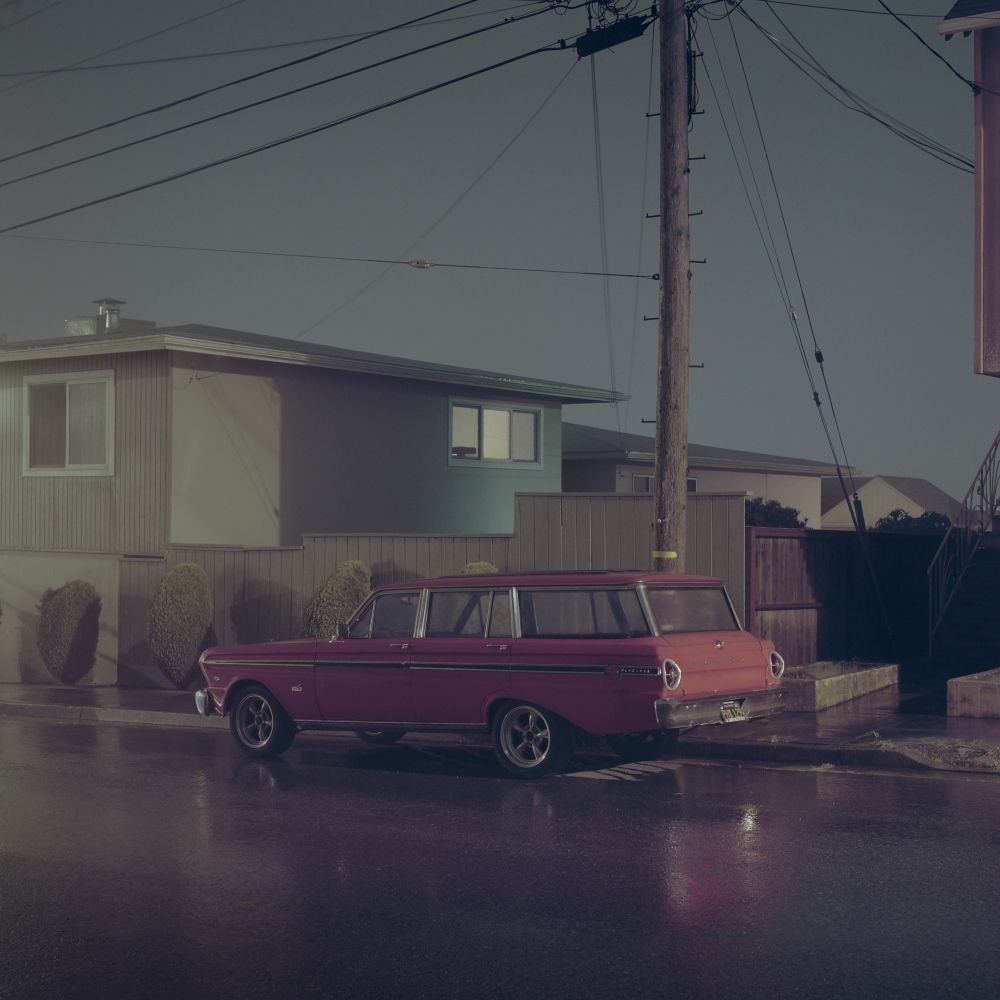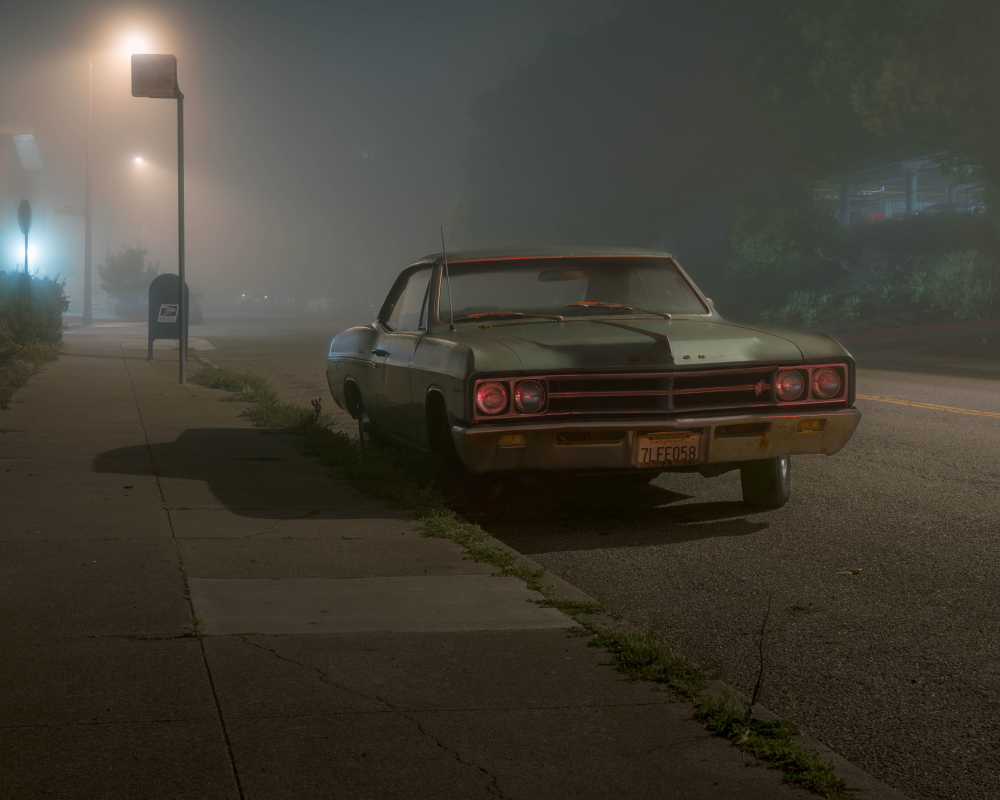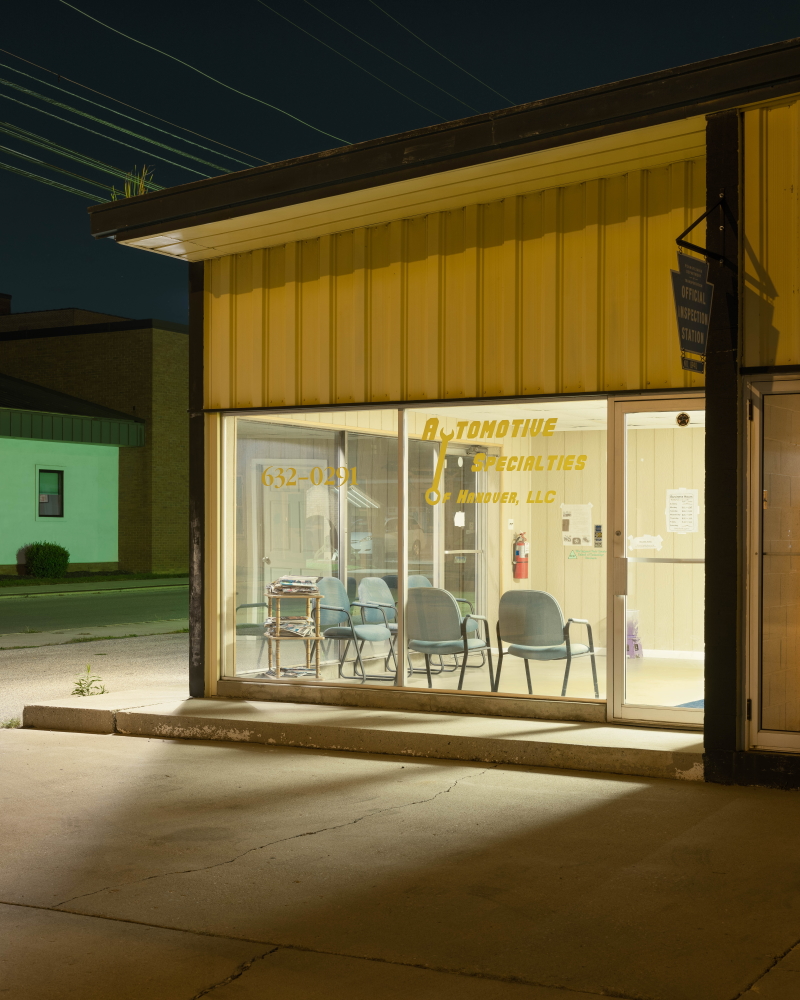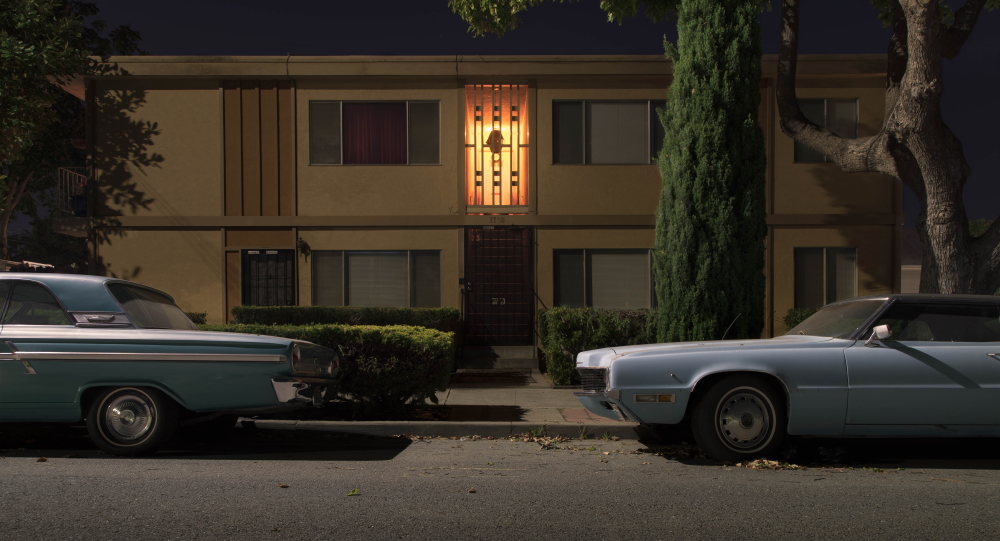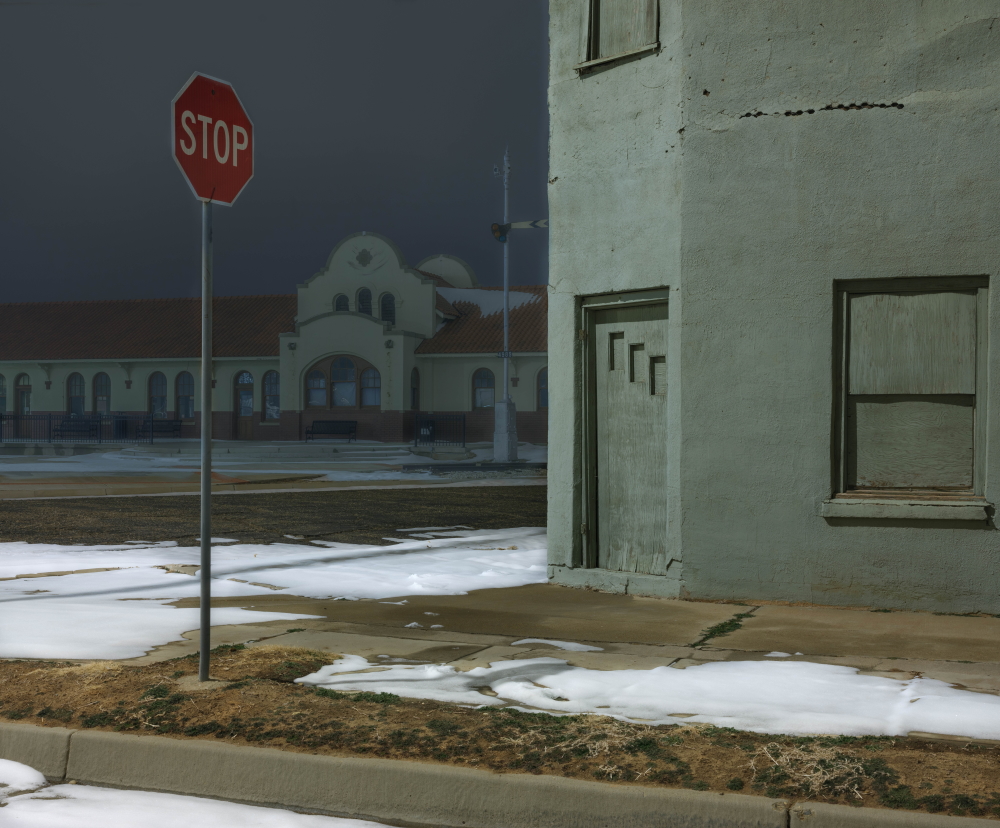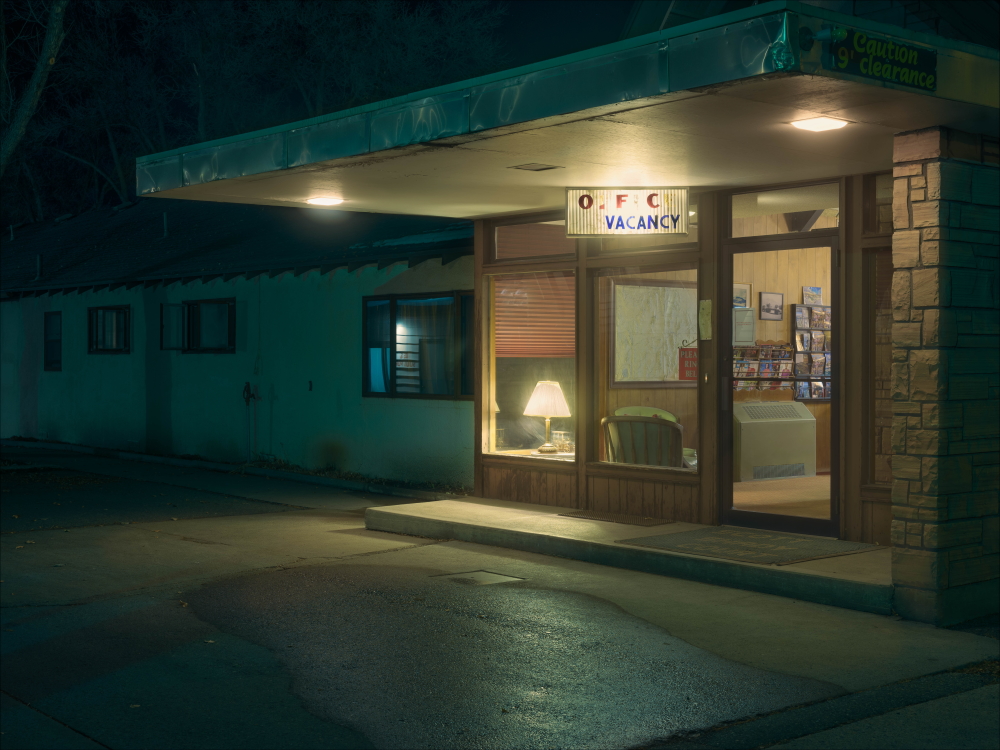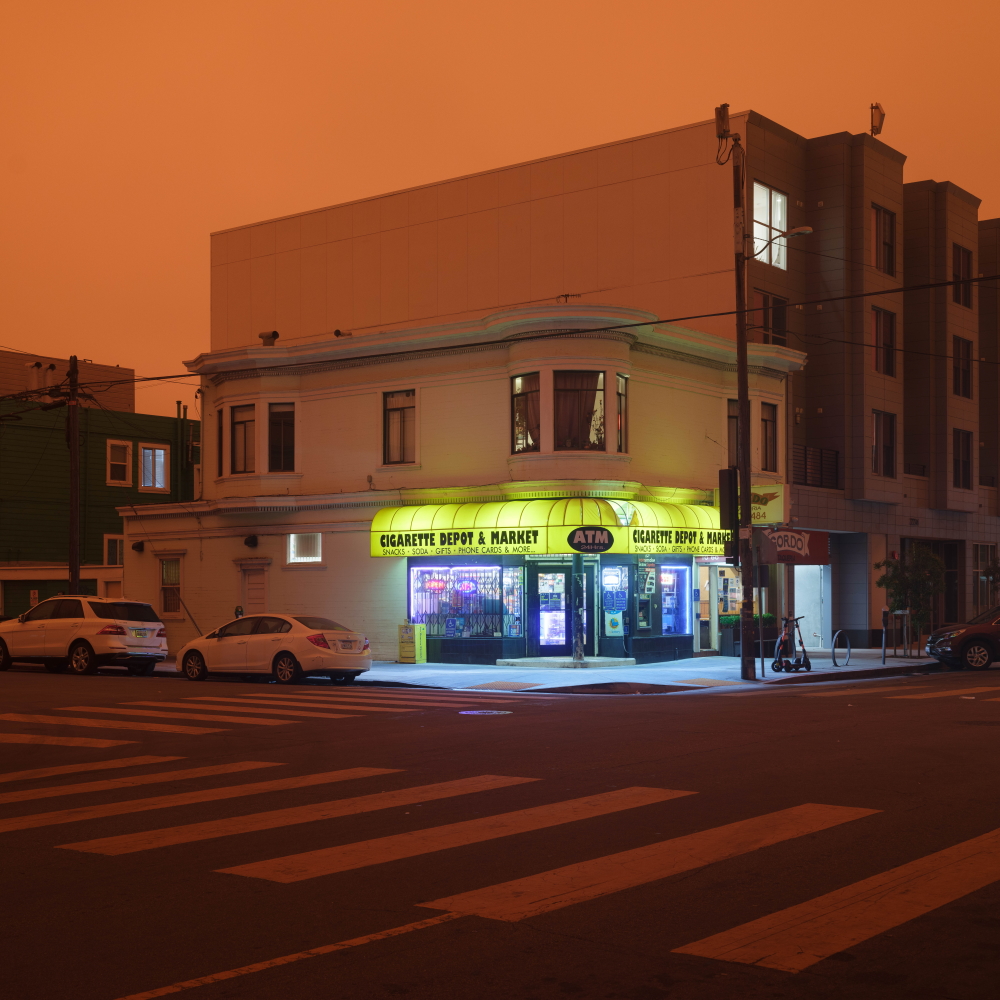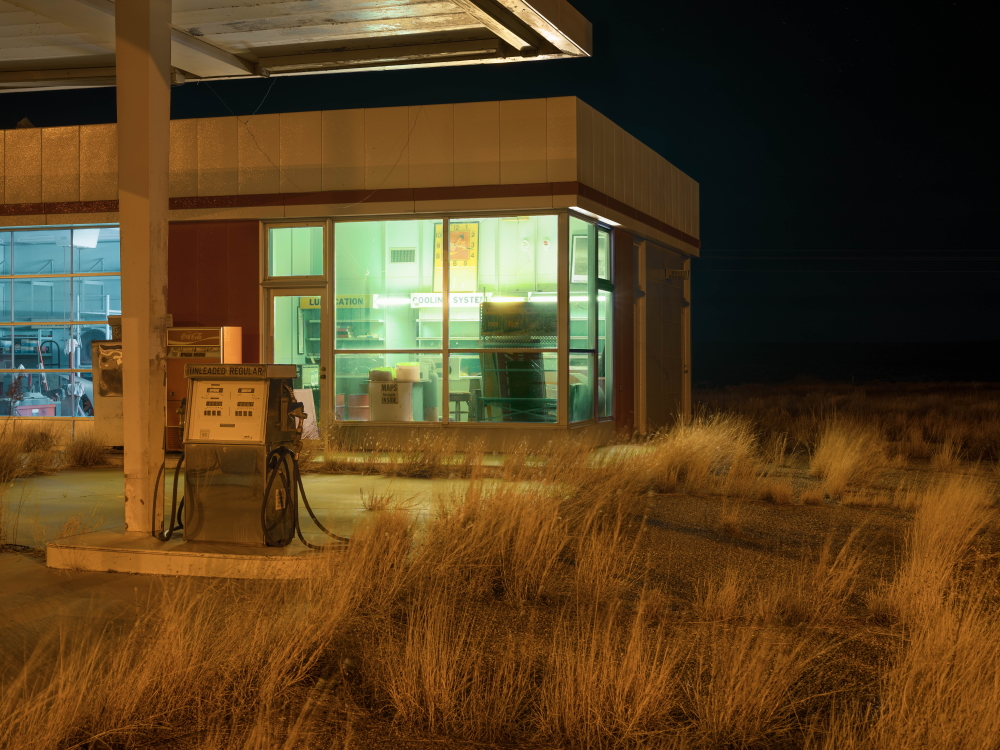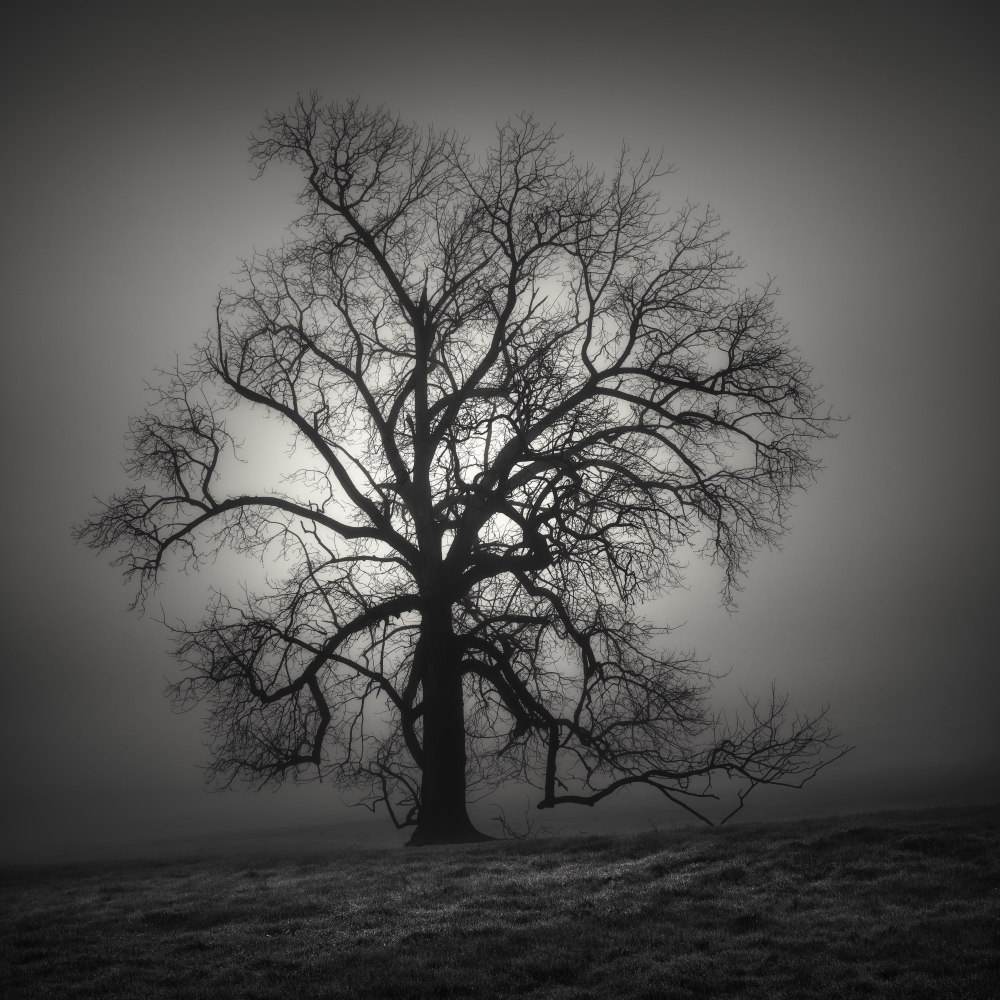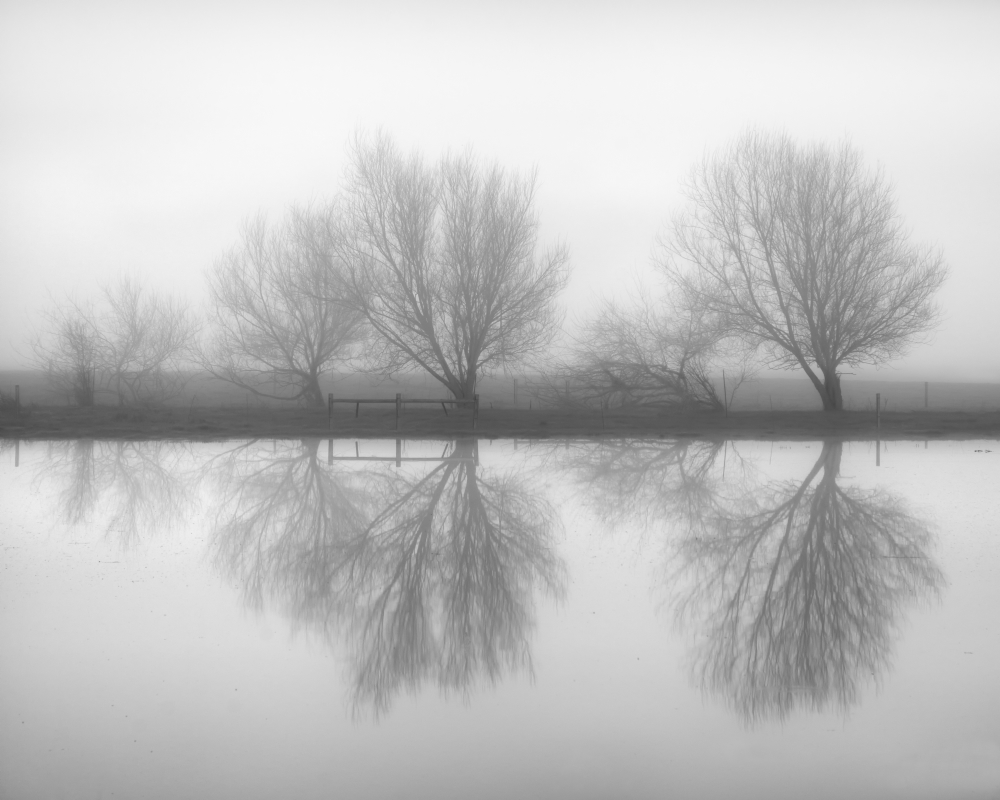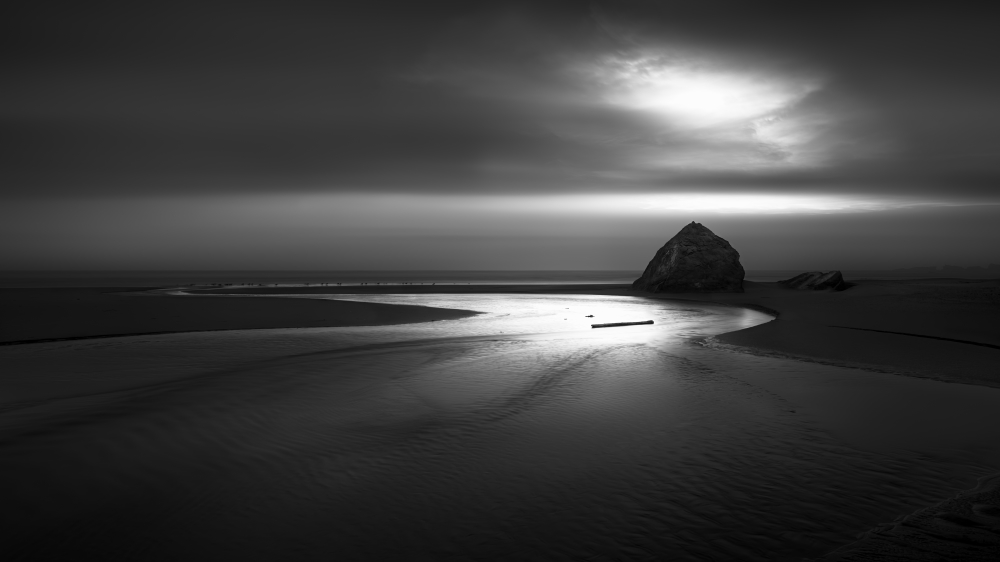Christopher Soukup
photographer
US
Imagine: Edward Hopper’s famous oil painting „Nighthawks“, a classic visual synonym for loneliness of a large city. Then Zen-like ethereal elements such as simplicity, minimalism, beauty and quietness in the black/whites. In addition to that the dramatic and moody as well as dark, mysterious side of director David Lynch’s surreal neo-noir mystery „Mullholland Drive“. This triangle is where Christopher Soukup‘s atmospherically dense photographs are located. Some of them look like film stills of a movie that has to be shot still. In any case it is an unique look onto a sometimes dimly-lit world in an extraordinary focus that does not leave viewers numb, but whose contemplation triggers special emotions between feeling calm or slightly uncomfortable - and so live on in one‘s memory.
Christopher Soukup
photographer
US
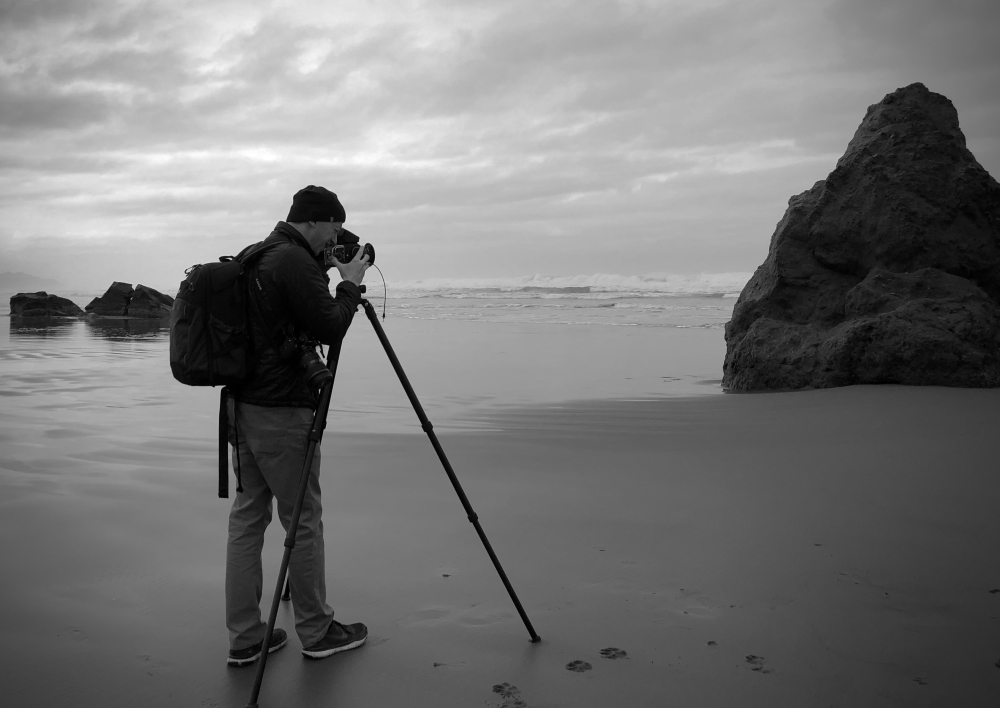
People play almost no role in his visual worlds. Many seem as if everything is extinct here. A touch of fog on city‘s streets or rural locations. Twilight. Spooky on one side, beautiful on the other. As "delicate" as they are, they nevertheless exert a strong attraction in a peculiar way. To come up with such impressive results requires certain preconditions: being at the right place at the right time, having an amazing eye and then fixing the moment with a very particular look for the meaningful essence of it by not overdoing anything. The master at work here is Christopher Soukup (* 1971). „Having grown up in Western Pennsylvania and other cities on the East coast, Soukup’s youth was spent near rust belt cities associated with decline, and as such, translates this idea of disconnect into the dark and cinematic works“, can be read on aestheticamagazine.com. „Having lived in California for many years, Soukup now draws upon the experiences from these earlier years, creating a reconciliation with the past and a thoughtful consideration of reflection in the days, months and decades that follow childhood.“
The man with a business background (Marketing and Technology) is an autodidact. In a longer interview with sliceofsilence.com he states that these three legendary (deceased) photographers have had an approach on his of way of shooting: Ansel Adams and Robert Adams (both specialists in capturing landscape) and Julius Shulman (architecture). „I started taking pictures in earnest in 2013“, Mister Soukup communicates. „Before that I shot the occasional roll of film, took a community class once but I lacked the patience and direction that I currently have.“
Christopher Soukup favors analog photography, uses a Hasselblad 500 c/m camera with Zeiss lenses on a Aluminium Benro tripod. Very much time is taken by himself in often long exposures of processing the paper prints mostly captured on Kodak films. These occasions are accentuated by a wide variety of music that he enjoys associating with his photographs – from the jazz of Dave Brubeck’s „Time Out“, movie soundtracks like Lynch’s „Mulholland Drive“ or of Ennio Morricone’s spaghetti westerns, orchestral pieces, to alternative rock from Radiohead („OK Computer“) or Mogwai’s „Young Team“. An additional background level for the explanation of his work opens up learning these informations: the books „Meditations“ by Marcus Aurelius and Seneca’s „Letters from a Stoic“ are his favourites plus dealing with the thoughts of one of the most influential spiritual teachers of the twentieth century, Zen master Suzuki Shunryū („Beginner’s Mind“).
„In each frame, Soukup explores the way tone, color and light/shadow balance can completely transform an ordinary scene“, notices plainmagazine.com. „The simplest landscapes — a parked car, sunset over a gas station, or a house‘s silhouette — prompt us to conjure up a narrative in our heads. Under the cloak of darkness, each image is moody and filled with tension. Speaking of his work, Soukup says, “I fond that search for presenting a feeling of sitting on the line between calm or ominous to be addicting. All of the photographs feel as though there is a story even if I never intend to provide one.”
One quote from the maker on sliceofsilence.com sums it up perfectly: „That concept of displaying what is there but not really so is one of the most significant aspects that draws me to photography and keeps me inspired.“
Christopher Soukup lives approximately one mile away from the nature park Lands End, part of the Golden Gate National Recreation Area, in San Franciso, California.
Interview December 2022
The greatest stories never told: "The Sounds of Silence"
INTUITION/IMAGINATION
How does intuition present itself to you – in form of a suspicious impression, a spontaneous visualisation or whatever - maybe in dreams?
For my work most ideas come from something more like a spontaneous visualization. I see something, maybe another photograph, a location a type of light (usually man-made) and it can spawn and idea or in the case of a physical location, bring me back when the conditions are right.
Will any ideas be written down immediately and archived?
For a current body of work I am developing, I certainly write down my ideas so I can effectively come back to them. I try to keep ideas general and not overly specific. I found that when I execute it in this manner, I am more likely to be open to doing something different / better when I am in execution mode than honing in on a specific vision. Sometimes something better presents itself and it’s good to be open to it.
?: How do you come up with good or extraordinary ideas?
I find they are harder to come up with when I make a point to do so. Making a point to do so is more of a reminder to have my mind in that type of space. Usually it arrives in more unexpected times and places and mediums like music or a passage or two from a book or song.
Are great ideas based on intuition and do they reveal themselves in a kind of clear as well complete version that just has to be realized? Or is it endless trials and errors (after the first spark) that result in constant developments up until the final result?
I find that when I pursue a fixed idea, it usually never works out as expected. However the unexpected during this physical pursuit of the idea usually leads to something unexpected that is indeed better.
What if there is a deadline, but no intuition? Does the first fuel the latter maybe?
For my work, deadlines are only something I impose on myself, nothing that gets assigned to me.
INSPIRATION
What inspires you and how do you stimulate this special form of imaginativeness?
Music, shows and movies can be the most consistent form of inspiration. It puts my mind into a place to be creative vs the day-to-day grind that seems to act as a detractor from that kind of thinking.
How do you separate the good from the bad and which ideas are worthwhile to be explored further or whether one idea has the potential of being outstanding really?
Since I am making photographs, I am usually more inclined to make the photograph and judge it later, sometimes upwards of a year or two later when I have removed most of the emotional attachment (good or bad) to the process of making the image.
Has it to appeal to you primarily or is its commercial potential an essential factor?
Commercial factor is not a concern to me. I am not always great at this, but I like to start with an audience of one, being me, before I consider anyone else.
Do you revisit old ideas or check what colleagues/competitors are up to at times?
I certainly revisit ideas or places, but what other people are doing is not a big influence on me.
CREATIVITY
Which time/place/environment suits your creative work process the best (tranquillity or pressure) and which path do you take from theory/idea to creation?
Tranquility is the best way for me to develop ideas. Even going so far as to have major chores, a cleaned-up living space etc. Having reminders of to-do items in front of you I find to be a boat anchor type influence on my ability to be creative.
What is better in the realization process: speed and force creativity i.e. grasp the magic of the moment, or a slow, ripening process for implementation/elaboration?
I seem to work slow in everything I do, or at least that is how it feels to me. So my work feel iterative as a way of this photograph being a process to making the next one and preferably a better one next time.
If problems occur during creativity or one’s stuck even, how can these be solved?
This is tricky as being truly stuck might be an indicator that the body of your work that you have been developing may have reached its natural conclusion. At some point all work reaches an end. I find sometimes the best way for me to break out of a funk is either to take a total break, or to grab my gear and go out and find something to photograph. Sometimes the sheer act of doing can put you on another path.
How important are self-doubt and criticism (by others) during such a process i.e. is it better to be creative on your own, only trust your own instincts, or in a team?
I have a project in works that I prefer to tell almost nobody about, in part that I don’t want to hear any negative criticism of the idea. So in my case, its managing my own levels of self-doubt. I even made an agreement with myself that the act of doing this project is more important than the net results and that I felt confident that I could make something solid for myself even if it went nowhere with others. At some point the work will be shared and I will have to deal with the other side of the coin but that will be after I have completed all or the majority of it.
Should a creative always remain true to him-/herself including taking risks & going against the flow or must one, for reasons of (commercial) survival, make concessions to the demands of the market, the wishes of clients and the audience’s expectations?
If you take commercial work, I think you have to bring your vision to the job up until the point that it is not meeting the client’s needs. The client has to come before your artistic vision. Beyond that I think it’s vital for personal work to be true to yourself way more than what might be popular. I suppose it also comes down to how you can or cannot pay the bills to get by.
How is innovation still possible if one has established a distinctive style and, just in case, is it good to be ahead of one’s time even one hazards not being understood?
I think if you are making work for yourself way more than meeting needs of others, then all of the above becomes irrelevant. Personally I think it’s better to be one step ahead, but then for me I don’t know if I know what that is really as I am not ranking the trends.
When does the time come to end the creative process, to be content and set the final result free - or is it work-in-progress with an endless possibility of improvement?
I think if you are me and you are out making photographs at night and you either don’t want to go, or you don’t want to get out of your car for something, then maybe that is the ultimate sign that you are done. I suppose it all depends on how naturally motivated you are by whatever you are creating. It’s hard to make something great on demand so in a way that lends itself to more of that continual work in progress.
In case of failure or - worse - a creativity crisis how do you get out of such a hole?
The creativity crisis may just be a function of time and opportunity. Failure is much harder, mainly due to it almost always requiring the opinion of others and managing your own expectations. The weight you put on yourself based on what others think of what you are producing, then you lose a high level of control for yourself. It’s a fine line I suppose but something to remind yourself unless commercial success is your final goal, which in my eyes is neither good nor bad.
SUCCESS
Should/can one resist the temptation to recycle a ‘formula’ one’s successful with?
I think that depends entirely on if that formula is one that you really like. If you are doing it for performative reasons, to perform for others and to meet the standards of others, then you are losing a bit of control of what you are doing and your process. I think to answer this fully, you have to start honestly with what your goals are.
Is it desirable to create the ultimate/timeless work, but doesn’t “top of the ladder” bring up the question of “what’s next?” i.e. isn’t such a personal peak “the end”?
I go to what Jerry Seinfield answered when asked how he would top doing his long running sit com. Why do I have to top it? ‘What’s next?’ is an expectation of others for you to live up to their own developing expectations. I guess it’s better to have a personal peak that can be identified than never having one to begin with, but I really think so much of this comes down to one's expectations and the drivers behind those expectations.
MY FAVORITE WORK:
This image “in a driving rain” is one that sticks out for me. I am not sure its my best but I enjoyed the entire process of making the photograph. I had found this item after a day hike and was determined to come back after sundown. Many times I have done something like this only to find that something in the scene changed or maybe a problem with the light. This was a spring evening with intermittent showers, and when I came back it started raining and at times intensely. I spent a bit of time to get the composition right and hoped that the lens hood did enough to keep the lens dry for what was probably a 3-4 minute exposure. I was soaked and so was everything else when I was done. I spent a considerable amount of time making small tweeks to the image during the editing process. I like the muted feel of the image, it really has a feeling of something from the past while not being nostalgic. Sometimes a plan comes together, many times it does not, this one did.
